Portland’s Sea Bags Set Sail With Sustainable Style
This Maine-based company gives old sails new life as nautically inspired tote bags.
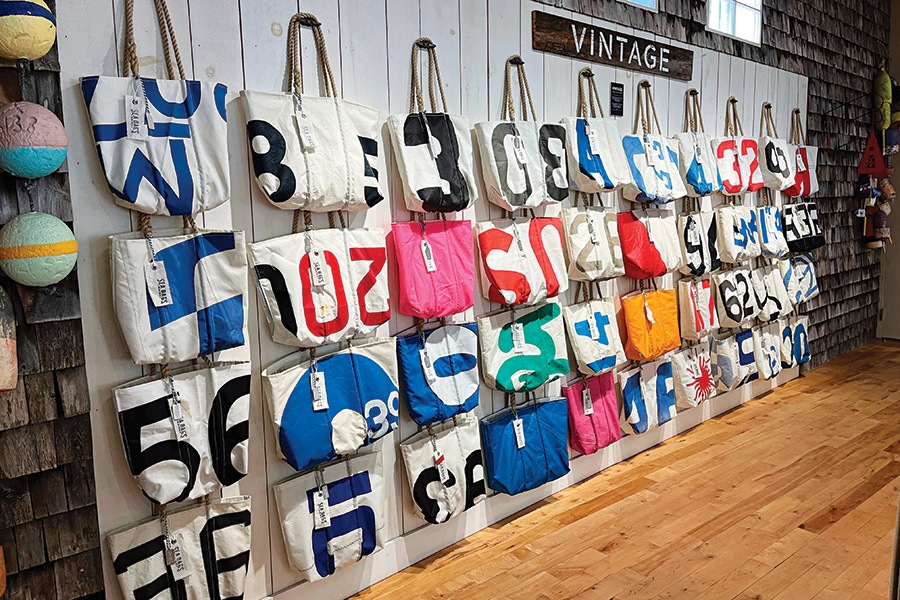
Courtesy photo
“Make the most of what you have” is a common phrase meant to encourage people to live their lives to the fullest. While it usually applies to humans, it’s also the ideal way to describe the work of Portland, Maine–based Sea Bags. By transforming used sails into upcycled totes and accessories, the company brings the unique history of those materials into an innovative, fashionable new form. And not only are its products proudly made in the U.S.—with a primary focus on resources hailing from Maine as well as New England—but they also carry with them all of the sun, salt, and smiles soaked up from the sails’ journeys straight to consumers here on land.
Founded in 1999 and incorporated in 2006, Sea Bags started as a small operation with one local store and an e-commerce channel. Today, it has expanded to 50 stores (and counting) nationwide, and the company has saved more than 1.5 million pounds of material from heading into landfills. From its headquarters on Custom House Wharf in the center of Portland’s working waterfront, the Sea Bags’ team of Maine craftspeople meticulously cuts, assembles, and handstitches each product in its line. The company works with eco-friendly inks, Massachusetts-based New England Ropes (one of the few rope manufacturers left in the region), and Maine-based Maine Thread (one of the last remaining thread manufacturers in the country) while also developing innovative solutions for minimizing scrap.
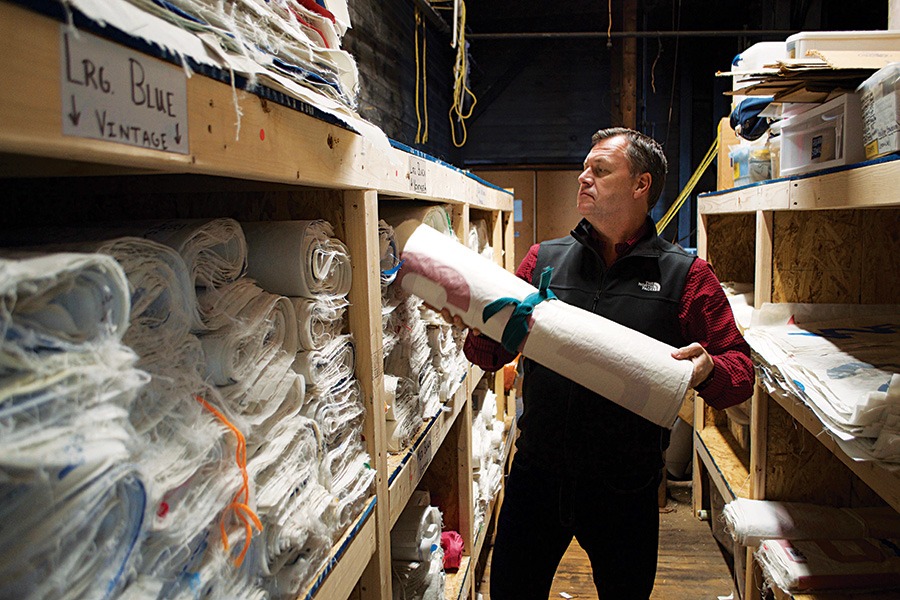
Sea Bags is keen on collaborations. In fact, they’ve worked on projects with Lark Hotels, Vera Bradley, and even the NFL, which they are able to do because its production process is so seamless. “Our sails come into Portland, so we can turn product around quickly—everything is local. All of our stitchers are right here. It’s nice to work one-on-one with people that are going to make the product. I can sit right across from them and review everything,” Knupp notes. “For example, our recent collaboration with the NFL—we received the license in late December [2023] or early January [2024], and we were able to turn product around before the teams went into playoffs.” / Courtesy photo
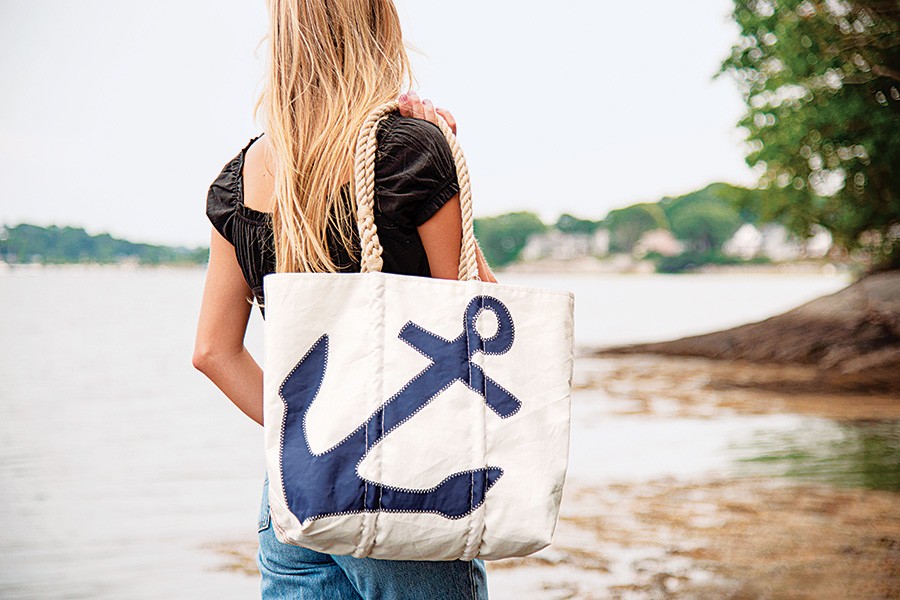
Courtesy photo

Courtesy photo
Tara Knupp, vice president of design and merchandising, sheds light on the company’s production process: “To start with, we have a sail acquisition team that’s based in a couple of different pockets in the United States, and they reach out to sailing schools, yacht clubs, and even individuals to collect sails,” she says. “The design process is twofold: Sometimes it’s the sailcloth that determines the design, sometimes we’re passionate about a specific color or icon (like a fish or an anchor), and that’s the focus.” Because every sailcloth is different, the team’s experience is always both fun and challenging. “Part of our job is that the substrate changes constantly. It’s not just a piece of cotton canvas that’s the same weight, size, or shrinkage,” Knupp adds, “We don’t always know the history of these sails. We’re not sure how old they are or how they were made, so they can act very differently.” As part of the creative process, the team looks at trends, attends some print and surface design shows in New York, and finds inspiration from clients’ special requests.
Depending on what customers or the sails acquisition team ushers in, Sea Bags’ designs could feature anything from a dolphin to a dragon. Yet at the same time, certain collections continue to be staples for the company, such as anchors (a top-selling design year after year), maps, and charts. Whether it’s vintage insignia, home décor, or accessories, there’s bound to be a Sea Bags product that every consumer can get on board with. New releases currently on the horizon include items made with high-performance sail material sourced from racing vessels and those created from spinnaker sails, which you may spot on shopping bags, windbreakers, and even dog bandannas.
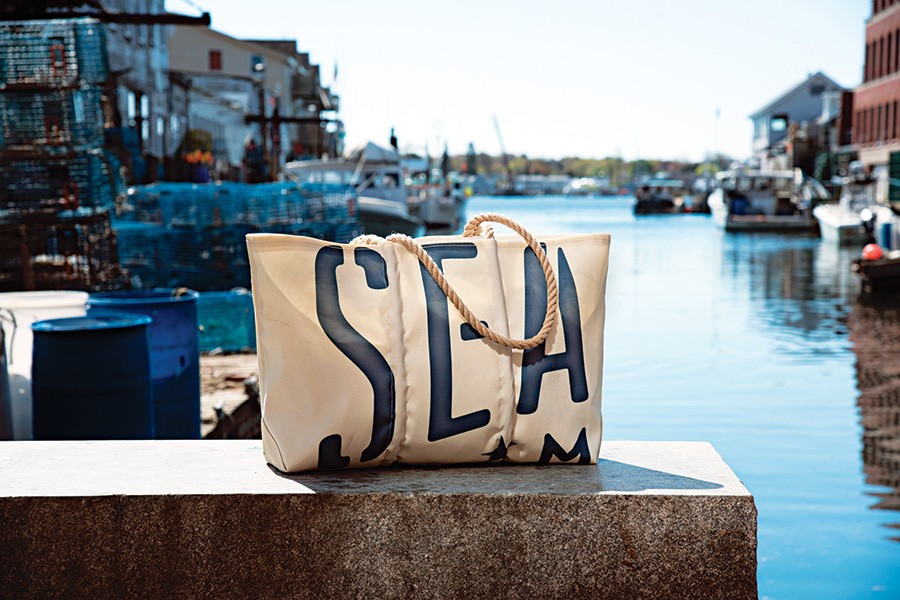
Aside from what Sea Bags’ sails acquisition team procures, the company also has a unique trade-in program. Last year, it resulted in the collection of more than 10,000 sails. “Let’s say you have a sail that’s been tucked away in your garage for 10 years. You can bring it into one of our stores and trade it for product,” Knupp explains. The result? You can have a Sea Bag created from that sail that’s authentically your own. “This is where we get so many heartwarming stories. Say you sailed on a Sunfi sh sailboat when you were a kid. Now you have an extra special piece of your childhood—or experience on the water—that you can carry around on your shoulder, which is really fun.” / Courtesy photo
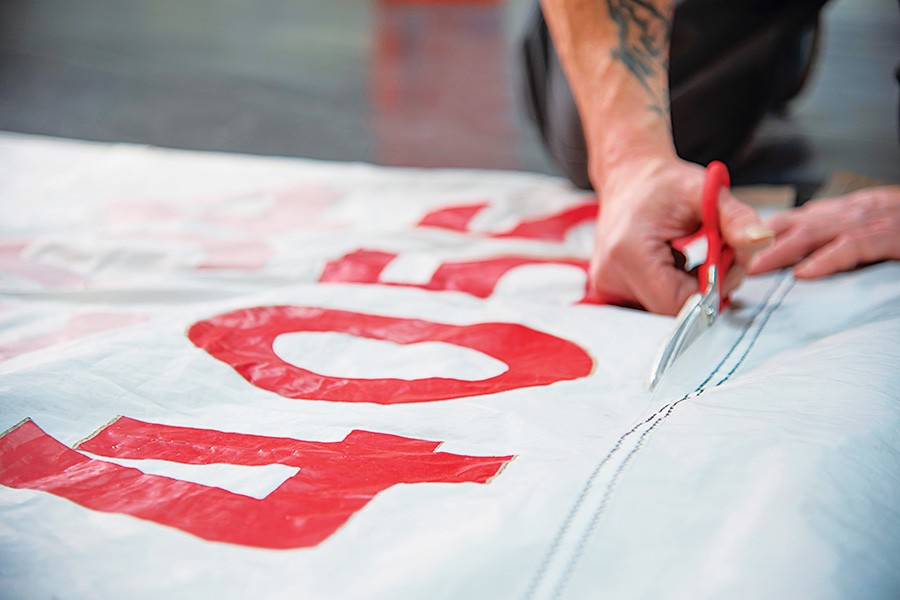
Courtesy photo
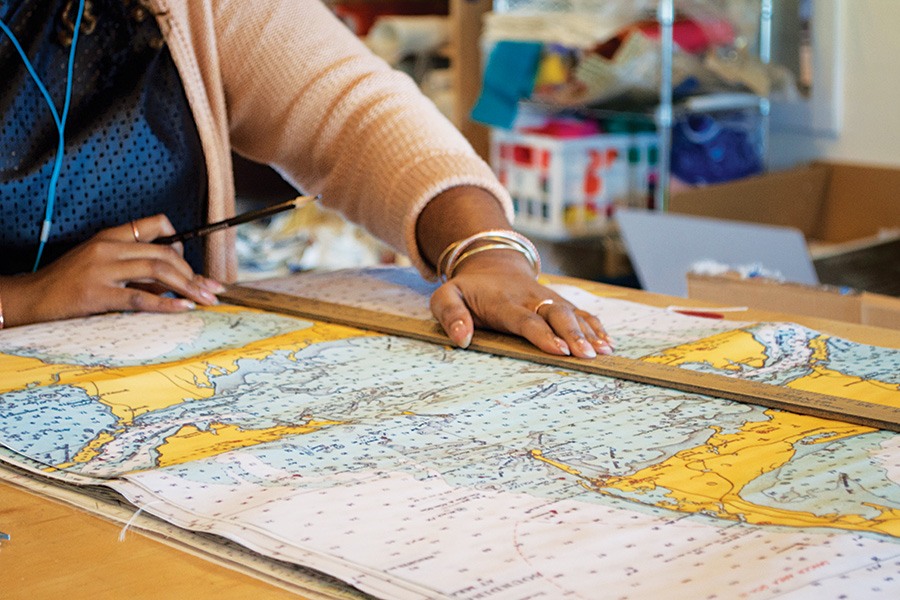
Courtesy photo
First published in the print edition of the Boston Home Summer 2024 issue, with the headline “Running a Tight Ship.”


